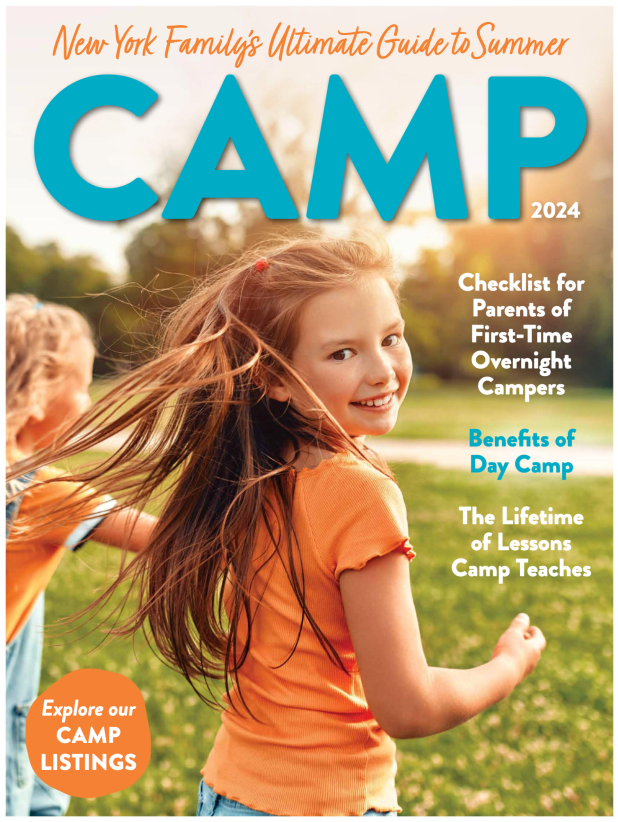
Have you ever seen a leafy green monster like the ominous and bug-eating venus fly trap, or done some bug-hunting of your own by digging in the dirt to find wiggly worms? Carnivorous plants and squirmy worms can be hard to find in our urban jungle. But on a recent afternoon, the Horticultural Society of New York brought these and other nature-inspired activities to kids and families at their annual Green Bean Bash. The aromatic scents of lemon and mint wafted as kids assembled their own tea bags by hand using organic herbs and spices. At another station, they used grains, fruit, and seeds to inspire a custom granola blend. Botanical artwork and decorative rock painting were among the many hands-on projects encouraging the 250-plus kids and their families to explore the plant world and our ecosystem.
“While the world makes strides in technology and cities grow, our mission is to ensure that we don’t forget the importance of plant life,” explains Sara Hobel, executive director of the Hort, the institution’s catchy nickname. “Most city kids grow up without exposure to gardening, but we try to help children discover the joy of nature. Gardening is a healthy activity that can help kids understand the connection between the food we eat and the plants that help sustain our communities.”
Through afterschool and summer educational programs, and the building of gardens in public and private schools, the Hort introduces plant life to children from an early age. Kids know how to buy vegetables in a store, but now they are learning to grow them. They might proudly grow up to three different types of lettuces in their school garden or snip fresh herbs to make their own salad dressing. Emphasizing the sensory experience of gardening—sight, smell, touch, taste—kids are learning that there might be as many as five different herbs in a favorite recipe, or how you can grow your own hot peppers. And as the Hort staff always reminds them, gardening is a hobby that can be enjoyed for a lifetime, from childhood through retirement.
“Family education is a big push for us, because we see the need across-the-board,” Hobel says. Compared to Whole Foods or at a farmer’s market, with their enormous selections of fresh fruits and vegetables, small groceries in lower-income neighborhoods often have a limited choice of fresh produce—typically broccoli, carrots, iceberg lettuce, and cucumbers. The Hort steps in with programs to help New Yorkers in low-income communities learn about the value of growing fresh foods. They also started a prison garden program based on the belief that people who have had little access to nature can greatly benefit from therapeutic gardening. “Some people may intuitively understand if you have a bad day, you might want to get out into nature for some respite. But that concept is stripped out of urban life,” Hobel elaborates.

It wasn’t always so. In the 19th Century, when sections of the city were still quite green and pastoral, many people grew their own vegetables. And among the affluent, in particular, gardening emerged as a popular pastime. Garden enthusiasts would revel in how to grow the biggest chrysanthemum or how to cultivate a new species of rhododendra or boxwood imported from England. Mansion owners and their gardeners held club meetings to exchange tips and ideas, and to compete in the annual flower show, which, for many years, was the Horticultural Society of New York’s signature event since its founding in 1902. By the mid-20th Century however, with the city’s green spaces on the wane, the Hort had shifted its priorities from avocational gardening to social service. It still runs the New York Flower Show Dinner Dance, which will take place on April 28 and invites leading floral designers to create elaborate table designs. But the show itself is less about competing flowers than it is a benefit to support all of the Hort’s enriching programming.
Recently, the Hort introduced a new family membership whose perks include special admission to the family benefit, a speaker luncheon (last year’s topic was how to “green” your household), special excursions (this year is a behind-the-scenes tour of the Queens County Farm), plus admission to other events and programs with families in mind.
“By starting the family membership we continue to develop interesting programming for all ages,” says George Pisegna, the Hort’s deputy director and chief of horticulture. “We try to teach our members about sustainable living: foods to eat, cleaning and bath products, green clothing and school supplies, recycling and tips to teach your children at home. We share ideas for eco-friendly DIY crafts and school projects. They are fun, educational—and the kids love them.”
A favorite workshop teaches how to make a terrarium. In a glass jar, the kids put in dirt and plants, then add tiny creatures to make it a living habitat. It’s so popular that parents have asked the Hort staff to offer it at children’s birthday parties and in schools. They offer several nature-inspired theme parties (how about a ladybug picnic?), or they can custom-design an activity based on your own child’s interest. They also present an annual student art show, exhibiting artwork from NYC school children. This year’s exhibit featured colorful floral collage and watercolor pieces selected from over 600 entries.

As the Hort’s director of education, Pam Ito, describes it, the joy of connecting a child to nature can be as transcendent as nature itself. In the classroom, she loves to demonstrate how plants can relate to your life. She might use the herb thyme as an example. With its antibacterial qualities, Ito explains that people have historically used thyme to preserve food and prevent spoiling. Now we use thyme in hand sanitizers and cleaning agents. She asks kids “what is unique about this plant?” Likening it to a “super power,” thyme can ward off insects and defend against other plants from growing near it.
It also likes to demonstrate how growing vegetables in a school garden relates to nature’s cycle: from seed to plant. “We grow it, we eat it, we share it,” she says. One group she recently worked with diced the vegetables and made elaborate “summer rolls.” They included things like cabbage and cilantro, which the kids don’t often eat. But the rolls were colorful and delicious—and they ate them up. “It was so nice because the kids grew all the vegetables themselves,” Ito adds excitedly.
If the Hort has its way, all city kids would have that experience.



















